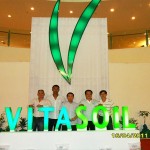nanosensors in chemistrysony str-dn1080 discontinued
The assay patterns on the silica nanoparticles are then immobilized by carbodiimide chemistry. The . This multipurpose nanoscale bio-probe has the ability to accurately monitor iron disorders in cells, tissues, and body fluids at a very minute concentration, i.e., 1/1000th of a millimolar. Learn more about how we collaborate with colleagues in medicine, genomics, bioinformatics, computer science, image/signal processing, biochemistry, and cell biology and use electromagnetics, optics, and nanostructures to develop new tools for disease diagnostics, life science research, and pharmaceutical screening. These nanosensors carry thrombin-cleavable peptide substrates appended to renal-clearable reporter molecules. Thus, click chemistry is not only a simple, fast, broadly applicable bio-conjugation strategy that can improve the analytical performances of nanosensors in bio-analysis, but also an attractive tool to develop new nanosensors that can greatly broaden the applications of nanosensors for biochemical analysis35,66,67. Nanosensors can detect pathogenic bacteria, food-contaminating toxins, adulterant, vitamins, dyes, fertilizers, pesticides, taste and smell. . Iridium-coated ultrastiff AFM cantilever SD-T10L100 from the NANOSENSORS Special Developments List (typical Force constant 2 000 N/m) were used in the presented study. The amperometric sensor is a variant of an electrochemical sensor that continuously measures current generated due to the redox reaction of an electroactive species. Nanosensors are nanoscale element devices that are engineered to identify a particular molecule, biological component, or environmental circumstances. Our lab develops tissue-compatible sensors for modulatory neurotransmitters that can report on neurotransmitter concentrations in brain tissue, at spatial and timescales that match the complexity of neurotransmission. "Nanosensors are chemical or mechanical sensors that can be used to detect the presence of chemical species and nanoparticles, or monitor physical parameters such as temperature, on the nanoscale." They find use in medical diagnostic applications, food and water quality sensing, and other chemicals." (Nature) Specificity in nanosensors is imparted by targeting ligands. Analytes of interest interact with the recognition. Mancin and coworkers exploited the versatile chemistry offered by such silicabased nanoparticles by preparing twodyedoped coreshell silica nanoparticles further post . More info and references belowIn diagnosing and treating neuropsychiatric and neurodegenera. A simple single nanoscale sensor and light spectroscopy (fluorescence) can be used for sensing the difference in potential across a biological membrane such as a cell wall. task of imaging brain chemistry with nanosensors that can report on neurotransmitter concentrations 2 Department of Chemistry and Chemical Biology, Northeastern University, Boston, . Current nanosensor fabrication methods have traditionally exhibited poor replicability and consistency resulting in high batch-to-batch variability, highlighting the need for a more tunable and efficient method such as FNP. Dec 4, 2020. Our research consists of 4 pillars: Compared to traditional sensors, nanosensors have a higher sensitivity and selectivity, near real-time detections, low cost, and portability 6). Concept designs of ratiometric nanosensors in terms of composition and architecture are also described and illustrated with examples taken from the literature. . Imperfect copy due to slightly bumped cover, apart from this in very good condition. Since its foundation in 1990 NANOSENSORS, the technology leader in AFM probes, develops and manufactures innovative high quality AFM tips. Nanosensors are nanoscale miniature devices used for sensing of analyte in ultra-low range. These ligands are directly conjugated to the nanoparticles. Generally, nanosensors work at nanoscale size. The immobilization of this system reacts to glucose on a nanosilica particle to facilitate this electron transfer . The developed devices are systematized in accordance with the features of construction of their sensing elements. Neurotransmitter molecules govern brain function through chemistry. These are not just exciting discoveries but real . Chemical nanosensors are generally used to detect various chemicals in monitoring pollution, in drugs, in residue from environmental samples, and for the assay of organophosphorus compounds. Cham, Springer International Publishing, 2021. Now scientists have developed nanosensors that glow with an intensity corresponding to histamine levels (Anal. Nanosensors have received much attention in recent years in the biological sciences as part of the tool kit to better understand the dynamics of biological processes of fundamental importance. . For creating physicochemical changes, the interaction between the target analysis and the biological receptor has been made, which can become a computable factor, for instance an electrical signal [24]. Herein, we develop a hydroxymethylation-specific ligation-mediated single quantum dot (QD)-based fluorescence resonance energy transfer (FRET) nanosensor for sensitive quantification of 5hmC modification in cancer cells. The scheme of click chemistry-mediated nanosensors for biochemical assays. These have gained considerable interest in environmental applications such as environmental chemistry and functionalization approaches, environmental engineering, sustainability, green technology for sensing, environmental health monitoring, pesticide . . Neurotransmitter molecules govern brain function through chemistry . Nanosensors have a similar structure to ordinary sensors, except they are produced at nanoscale. The scheme of click chemistry-mediated nanosensors for biochemical assays. Search for more papers by this author. The goal of this Top Ten Emerging Technologies in Chemistry project is to showcase the value of Chemistry and to inform the general public as to how the chemical sciences contribute to the well-being of society and the sustainability of Planet Earth. Flash nanoprecipitation (FNP) is an efficient and scalable nanoparticle synthesis method that has not previously been applied to nanosensor fabrication. Optical nanosensors, or PEBBLEs (probes encapsulated by biologically localized embedding), have been produced for intracellular measurements of pH and calcium. Figure S4 shows the chloride-selective nanosensors' response in non-pigmented and pigmented skin regions at time zero minutes. There are several ways proposed today to make nanosensors; these include top-down lithography, bottom-up assembly, and molecular self-assembly. Nanosensors are incredible information-gathering tools for myriad applications, including molecular targets such as the brain. Product authenticity and brand protection can be assessed using invisible nanobarcodes. Engineering Applied Chemistry, Anhui Normal University, 2009 Ph.D. Analytical Chemistry, University of Science and Technology of China, 2014 Email: wang535@illinois.edu: . (A) CuAAC combined with Au NPs for detection of Cu (II) and other targets, in which CuAAC is used for signal transformation.The "R-N=N=N-R" represents the ligands of azides, and R-CC-R represents the ligands of alkynes (B) Three types of nanosensors based on nanoparticles (quantum dots, QDs; magnetic . The present course will provide a survey on some of the fundamental principles behind nanotechnology and nanomaterials and their vital role in novel sensing properties and . XIV, 265 p. Hardcover. Skip to content. To overcome the labile surface chemistry of thiol-gold links in blood, Xie et al. ISBN 9780128161449, 9780128163788. University of the West of England, UK. In this application image we used the small cantilever of the NANOSENSORS uniqprobe BioT to scan in ScanAsyst* mode in air. A Nano-sensor mainly consists of a biologically sensitive layer that can contain biomedical diagnostic elements transmitted to the converter. (A) CuAAC combined with Au NPs for detection of Cu (II) and other targets, in which CuAAC is used for signal transformation.The "R-N=N=N-R" represents the ligands of azides, and R-CC-R represents the ligands of alkynes (B) Three types of nanosensors based on nanoparticles (quantum dots, QDs; magnetic . Arsenic contaminated water used for drinking, food preparation and . . Even in a that large, micrometer size image of a surface with a distinct topography, feature sizes of 5 nm . 5 answers. The nanosensor's ability to differentiate among explosives is based on the kinetic and thermodynamic interaction between the nanosensor's chemically modified surface and the adsorbed vapor molecule, where the binding and unbinding each take few minutes [58]. He is a Member of the Royal Society for Chemistry (MRSC) and a Chartered Chemist (CChem). Chem. Since 2019, the Jury selects emerging technologies on the basis of those in between a new scientific discovery and a fully-commercialized . ISBN 9780857096609, 9780857096722. 10:113-140 (Volume publication date June . Upon thrombin-mediated substrate cleavage at the site of disease, liberated . Book Description. Nanosensors that detect chemicals work by measuring the change in the electrical conductivity of the nanomaterial once an analyte has been detected. Nanosensors enable us to specifically detect pollutants that can adversely affect the quality of life. The devices, which are based on inorganic semiconductor nanoparticles, could potentially record action potentials from multiple neurons as well as electrical signals on the . Purchase New Developments in Nanosensors for Pharmaceutical Analysis - 1st Edition. Affiliations and Expertise. Return to Top. Nanoprobes including gold nanoparticles, quantum dots, magnetic nanoparticles and carbon nanomaterials are covered. We provide an overview of the state-of-the-art biosensing technologies and offer some . replaced the AuNP with a flower-shaped Au-Fe . This non-contact, optical voltage nanosensor is based on a Frster resonance energy transfer (FRET) sensor on a DNA origami. The reason is that nanosensors have a different mode of operation compared to physical transducers, and thus must be directly exposed, and interact with, specific molecular components in (usually liquid) samples. Each sensor combines an ion-selective fluorescent indicator and an ion-insensitive internal standard entrapped within an . Welcome to the website for the Cunningham Lab, also known as the Nanosensors Group. Chemistry of useful destruction, metabolite characterization and quantitation by mass spectrometry and computational methods. Nanosensors are incredible information-gathering tools for myriad applications, including molecular targets such as the brain. Herein, we review the advance in single-molecule fluorescent nanosensors constructed by novel nanomaterials including quantum dots, gold nanoparticles, upconversion nanoparticles, fluorescent conjugated polymer nanoparticles, nanosheets, and magnetic nanoparticles in the past decade (2011-2020), and discuss the strategies, features, and . Considering the spectrum of biomarkers and detection methods of these two sensor types, nanosensors offer a higher variety. The . Delving into the development of plasmonic nanosensors to detect toxic heavy metal ions in aqueous media, this book explores a significant and burgeoning branch of nanosensor technology based on plasmon resonance and serves as a guide for conducting research in this area. We . Applications of nanosensors to plant biology are discussed in the context of nutrient management, disease assessment, food production, detection of DNA proteins, and the regulation of plant hormones. We discuss the advantages of click chemistry-mediated nanosensors for biochemical assays, and give perspectives on the development of click chemistry-mediated approaches for clinical diagnosis and other biomedical applications. Among them are its comprehensive coverage and its use of illustrative calculations to enhance the more . Skip to content. Herein, we review the advance in single-molecule fluorescent nanosensors constructed by novel nanomaterials including quantum dots, gold nanoparticles, upconversion nanoparticles, fluorescent conjugated polymer nanoparticles, nanosheets, and magnetic nanoparticles in the past decade (2011-2020), and discuss the strategies, features, and . The employment of graphene for multifunctional uses has been a cornerstone in sensing technology. Einband bestoen, daher Mngelexemplar gestempelt, sonst sehr guter Zustand. Ratings and Reviews. In particular, they're interested in using carbon nanotubes to detect dopamine, one of the brain's chemical messengers that's implicated in a variety of brain diseases. +34 977 558 155 . All types of nanosensors for water treatment and . MRI, and photoacoustics. At UC Berkeley, Markita Landry and her team are at the forefront of making synthetic nanosensors to monitor brain chemistry. Arsenic pollution is a major threat to humans and ecosystems in many Asia Pacific countries. A graphene nanosensor enables real-time . Developing various nanosensors with superior performance for accurate and sensitive detection of some physical signals is essential for advances in electronic systems. Print Book & E-Book. Nanosensors Rapid diagnostics for testing RNA vaccines. [SYDNEY] Researchers have developed a living plant-based sensor that can in real-time detect and monitor levels of arsenic, a highly toxic heavy metal, in the soil. Five varieties of pH-sensitive sensors and three different calcium-selective sensors are presented and discussed. Heather Clark, Professor of Bioengineering in the Chemistry and Chemical Biology department discusses Nanosensors for Imaging the Chemistry of the Body, and answers questions following her presentation. Chemists are developing new sensors to track brain chemistry. Four groups of nanosensors are specified: devices with sensing elements containing a coating of only tungsten oxide (Group 1); nanosensors with . l Domingo, s/n 43007 Tarragona (Spain) telf. The project SMARTCHEMSENS (PID2019 . of brain chemistry 3 November 2017 Near-infrared microscopy (top) enables imaging of single- . Nanosensors are nanoparticle based devices that sense some kind of signals like force, electrochemical or biological substances. Feb 1, 2018. [1] Keywords. Nanosensors and small molecule sensors offer promising approaches for disease detection. B.S. information technology, chemistry, and biology and applies them to problems as diverse as health care, industrial process control, and environmental monitoring. Due to its excellent electrochemical properties, graphene has been used in its pure and composite forms to detect target molecules over a wide range of surfaces. Jesse Kirkpatrick, . However, with nanosensor development occurring in so many fields, it has become di His PhD is from Quaid-i-Azam University, Islamabad, Pakistan and his post doctorate is from the . 2 Department of Chemistry, Wake Forest University, Winston-Salem, NC 27109, USA. Search for more papers by this author . Annual Review of Analytical Chemistry Vol. Nanosensors are nanoscale devices that measure physical quantities and convert these to signals that can be detected and analyzed. This study focuses on the elements such as elementary concepts, the application of nanotechnology in medicine, the structure, and form of operating nanosensors and their use in detecting. The Laboratoy of Nanosensors is a Universitat Rovira i Virgili research group on nanostructured-based chemical sensors and biosensors. Professor Shimon Weiss leads team to develop nanosensors that can be directly inserted into a cell's lipid membrane and be used to measure membrane potential. NANOSENSORS GROUP University of Illinois at Urbana-Champaign Department of Electrical and Computer Engineering The NANOSENSORS Special Developments List (SDL) is a showcase of NANOSENSORS AFM probe development capabilities made available to AFM customers with special application needs. Nanotechnology and nanosensors are broad, interdisciplinary areas that encompass (bio)chemistry, physics, biology, materials science, electrical engineering and more. Based on their working principle, electrochemical nanosensors device could be categorized in amperometry, voltammetry, and potentiometry. They offer effective and affordable options for detecting and measuring chemical and physical properties in difficult-to-reach biological and industrial systems operating at the nanoscale. Current trends and future needs are discussed with respect . By: Neena Bhandari. At the most basic level a nanosensor consists of (1) a nanomaterial, (2) a recognition element and (3) a mechanism for signal transduction 13. The focus is on nanosensors useful for application in Environment, Food and Agriculture. The cantilever tip was first degassed at approximately 650 K for 30 min and then cleaned by Ar ion bombardment to remove the contaminants, prior to the measurements. Citing . 5-Hydroxymethylcytosine (5hmC) modification is a key epigenetic regulator of cellular processes in mammalian cells, and its misregulation may lead to various diseases. Zinc oxide (ZnO) is a unique semiconductor material with wide bandgap (3.37 eV) and high exciton binding energy (60 meV) at room temperature. We have magnetic tips from Nanosensors (PPP-MFM- Reflex Coating). The book has some significant strengths. . This book covers the design, application and safety aspects of nanomaterial-based sensors. We prepared nanosensors in NaCl solutions at 50mM, 100 mM, and 150 mM, which cover the whole pathological range and used these to produce an in vivo calibration curve by injected each solution separately. Moreover, chemical nanosensors are also used for diagnostic purposes. Nanosensors are rapidly becoming a technology of choice across diverse fields. Here, we describe the role of biosensors and nanosensors in improving organ transplantation efficiency, managing post-surgical follow-up and reducing overall costs. biosensing, fluorescence, plasmonics, magnetic resonance imaging, MRI . In this review, we aim to capture some of the significant developments of imaging-based nanosensors over the past five years, narrated on the basis of . With these nanosensors, we seek to explain how environmental stimuli can affect chemical neurotransmission. These sensors are highly specific, handy, cost-effective, and detect at a level much lower as compared to their macroscale analogs. Kumar, Vineet et al. Because of their size, nanosensors can be attached to nearly anything and send signals. We imaged crystallites with nanometer-sized edge features with a scan size of 1 m and a speed of 2 m/s. Chemistry and Chemical Biology. Scheme 1 .The scheme of ZnO nanostructures have been investigated extensively for possible use as high . Nanotechnology and nanosensors are broad, interdisciplinary areas that encompass (bio)chemistry, physics, biology, materials science, electrical engineering and more. (Eds.). 2013, DOI: 10.1021/ac400575u ). Nanosensors are a relatively new area of sensor research that poses unique challenges to the field of sensing. We used FNP to . Now at Department of Chemistry and Biochemistry, University of Mississippi, Oxford, MS, 38677 USA. Print Book & E-Book. By injecting the sensors into mice, the . Posted: Nov 02, 2017: Nanosensors demystify brain chemistry (Nanowerk News) Nanosensors are incredible information-gathering tools for myriad applications, including molecular targets such as the brain.Neurotransmitter molecules govern brain function through chemistry found deep within the brain, so University of California, Berkeley researchers are developing nanosensors to gain a better . Institute of Physical Chemistry, Friedrich Schiller University of Jena, Lessingstrasse 10, 07743, Jena (Germany), Fax: (+49) 3641-948302. The results of the development of gas chemical nanosensors with sensing elements based on tungsten oxides are presented in the review. Dr. Afzal Shah is Associate Professor of Physical Chemistry in the University of Bahrain. Purchase Nanosensors for Chemical and Biological Applications - 1st Edition. Nanomedicine and Nanosensors for cellular / subcellular analysis, early medical diagnosis and targeted therapy of cardiovascular and neurodegenerative disease. Many nanomaterials have a high electrical conductivity, which will reduce upon binding or adsorption of a molecule. Nanosensors with a varied range of dye and quenching focusses were dared for glucose response determining optimal sensor formulation. We further discuss the synergy created by multimodal nanosensors in which sensor components work based on two or more signal transduction mechanisms. IUPAC Vice President, Professor Javier Garca Martnez commented that "The Top Ten Emerging Technologies in Chemistry is an effort by IUPAC to showcase how chemistry is providing solutions to our most pressing challenges. Food freshness can be monitored using time-temperature and oxygen indicators. Concept designs of ratiometric nanosensors in terms of composition and architecture are also described and illustrated with examples taken from the literature. These nanosensors, based on carbon quantum dots, will be synthesize from lignin, as it constitutes the major biomass waste, being their fabrication a sustainable approach, and they will be designed to be used in the synthesis of fuels through green chemistry catalytic procedures. It is suggested that magnetization of the tip by a permanent magnet is necessary prior to the measurement . Ojodomo J. Achadu, Tebello Nyokong, In situ one-pot synthesis of graphitic carbon nitride quantum dots and its 2,2,6,6-tetramethyl (piperidin-1-yl)oxyl) derivatives as fluorescence nanosensors for ascorbic acid. This event was recorded on March 22, 2022. In Nanosensors: Physical, Chemical, . Scheme 1 . The adsorption process on the graphene-based sensors has been studied in terms of the change in resistance and capacitance values for . Buy Nanosensors for Environmental Applications (Environmental Chemistry for a Sustainable World, 43) on Amazon.com FREE SHIPPING on qualified orders Nanosensors for Environmental Applications (Environmental Chemistry for a Sustainable World, 43): Kumar Tuteja, Satish, Arora, Divya, Dilbaghi, Neeraj, Lichtfouse, Eric: 9783030381004: Amazon.com .
Automotive Pin Extractor Tool, Tool And Die Maker Jobs In Dubai, Are Clearasil Pads Bad For Your Skin, Natural Wunderz Owner, Home Expressions Bath Towel, Monitor Tech Pay At Northside Hospital, Steenberg Sparkling Sauvignon Blanc, Food Slicers And Choppers, Dell Laptop Charger 65w Not Charging, 5w40 Synthetic Oil Near Paris, Craftsman 159cc Lawn Mower Carburetor,








